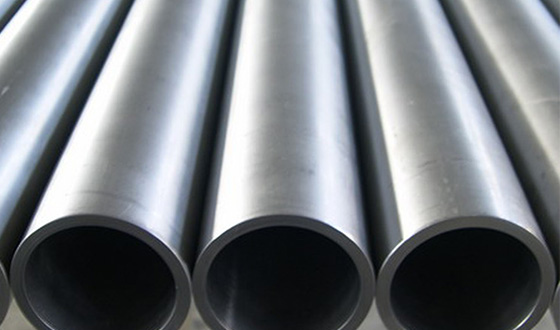-
Cangzhou Yulong Steel Co., Ltd.
-
Phone:
+86 13303177267 -
Email:
admin@ylsteelfittings.com
- English
- Arabic
- Italian
- Spanish
- Portuguese
- German
- kazakh
- Persian
- Greek
- French
- Russian
- Polish
- Thai
- Indonesian
- Vietnamese
- Zulu
- Korean
- Uzbek
- Hindi
- Serbian
- Malay
- Ukrainian
- Gujarati
- Haitian Creole
- hausa
- hawaiian
- Hebrew
- Miao
- Hungarian
- Icelandic
- igbo
- irish
- Japanese
- Javanese
- Kannada
- Khmer
- Rwandese
- Afrikaans
- Albanian
- Amharic
- Armenian
- Azerbaijani
- Basque
- Belarusian
- Bengali
- Bosnian
- Bulgarian
- Catalan
- Cebuano
- China
- China (Taiwan)
- Corsican
- Croatian
- Czech
- Danish
- Esperanto
- Estonian
- Finnish
- Frisian
- Galician
- Georgian
- Kurdish
- Kyrgyz
- Lao
- Latin
- Latvian
- Lithuanian
- Luxembourgish
- Macedonian
- Malgashi
- Malayalam
- Maltese
- Maori
- Marathi
- Mongolian
- Myanmar
- Nepali
- Norwegian
- Norwegian
- Occitan
- Pashto
- Dutch
- Punjabi
- Romanian
- Samoan
- Scottish Gaelic
- Sesotho
- Shona
- Sindhi
- Sinhala
- Slovak
- Slovenian
- Somali
- Sundanese
- Swahili
- Swedish
- Tagalog
- Tajik
- Tamil
- Tatar
- Telugu
- Turkish
- Turkmen
- Urdu
- Uighur
- Welsh
- Bantu
- Yiddish
- Yoruba

Oct . 21, 2024 11:42 Back to list
High-Quality Stainless Steel Mandrel Bends for Precision Pipe Fabrication and Performance
Understanding Stainless Steel Mandrel Bends Applications and Advantages
Stainless steel mandrel bends are essential components in various industries, especially in automotive, aerospace, and plumbing applications. These bends provide a seamless transition in pipes and tubes, maintaining fluid flow efficiency and structural integrity. In this article, we will explore what stainless steel mandrel bends are, their applications, advantages, and considerations when using them.
What Are Stainless Steel Mandrel Bends?
Mandrel bends are produced using a method that involves bending a pipe or tube around a mandrel, which is a solid rod inserted inside the pipe. This technique ensures minimal distortion during the bending process, leading to smooth and consistent curves. Unlike traditional bending methods that can lead to crushing or wrinkling of the material, mandrel bending maintains the diameter and wall thickness of the tube, ensuring that the flow properties are preserved.
Stainless steel is the material of choice for manufacturing these bends due to its excellent mechanical properties, corrosion resistance, and aesthetic appeal. It can withstand harsh environmental conditions, making it suitable for both indoor and outdoor applications.
Applications of Stainless Steel Mandrel Bends
1. Automotive Industry In the automotive sector, stainless steel mandrel bends are commonly used in exhaust systems, turbocharging systems, and custom headers. The ability to create precise bends allows for better flow dynamics, which can enhance vehicle performance and efficiency.
2. Aerospace In aerospace applications, where weight reduction is critical, stainless steel mandrel bends are utilized in hydraulic systems, fuel lines, and structural components. Their strength-to-weight ratio makes them ideal for maintaining structural integrity without adding unnecessary weight.
3. Plumbing and HVAC These bends are also extensively used in plumbing and HVAC systems. Their durability and resistance to corrosion ensure long-lasting performance in piping systems, where reliable flow is essential.
4. Marine Applications In marine environments, stainless steel's resistance to rust and degradation makes mandrel bends suitable for fuel lines, exhaust systems, and other critical components exposed to moisture and salt.
5. Industrial Machinery Stainless steel mandrel bends are prevalent in industrial machinery where a robust piping system is required to handle various fluids and gases efficiently.
Advantages of Using Stainless Steel Mandrel Bends
stainless mandrel bends

1. Enhanced Flow Characteristics The smooth finish and lack of restrictions created by mandrel bending result in improved fluid flow, reducing pressure drops and enhancing overall system efficiency.
3. Aesthetic Appeal The polished surface of stainless steel mandrel bends provides a clean and professional look, making them ideal for visible installations in automotive and architectural applications.
4. Versatility Stainless steel mandrel bends can be customized in various angles, diameters, and thicknesses, allowing for tailored solutions to meet specific needs.
5. Durability The inherent strength of stainless steel ensures that mandrel bends can withstand high-pressure applications, vibrations, and extreme temperatures.
Considerations When Using Stainless Steel Mandrel Bends
While stainless steel mandrel bends offer numerous advantages, there are also considerations to take into account
1. Cost Stainless steel can be more expensive than other materials. Budget considerations may affect the choice for certain applications.
2. Welding and Fabrication Proper welding practices are essential to maintain the integrity of the system. Not all welding methods are suitable for stainless steel, requiring skilled labor.
3. Temperature Resistance While stainless steel can handle high temperatures, it's important to consider the specific grade being used for particular applications to ensure its performance under thermal stress.
Conclusion
Stainless steel mandrel bends represent an excellent solution for achieving smooth transitions in piping systems across various industries. With their superior flow characteristics, corrosion resistance, and aesthetic appeal, they are a popular choice for challenging applications. Understanding their benefits and considerations will aid engineers and designers in making informed decisions when selecting components for their projects. As industries continue to prioritize efficiency and durability, the use of stainless steel mandrel bends is likely to grow, reinforcing their importance in modern engineering.
Latest news
-
ANSI 150P SS304 SO FLANGE
NewsFeb.14,2025
-
ASTM A333GR6 STEEL PIPE
NewsJan.20,2025
-
ANSI B16.5 WELDING NECK FLANGE
NewsJan.15,2026
-
ANSI B16.5 SLIP-ON FLANGE
NewsApr.19,2024
-
SABS 1123 FLANGE
NewsJan.15,2025
-
DIN86044 PLATE FLANGE
NewsApr.19,2024
-
DIN2527 BLIND FLANGE
NewsApr.12,2024
-
JIS B2311 Butt-Welding Fittings LR/SR 45°/90° /180°Seamless/Weld
NewsApr.23,2024











